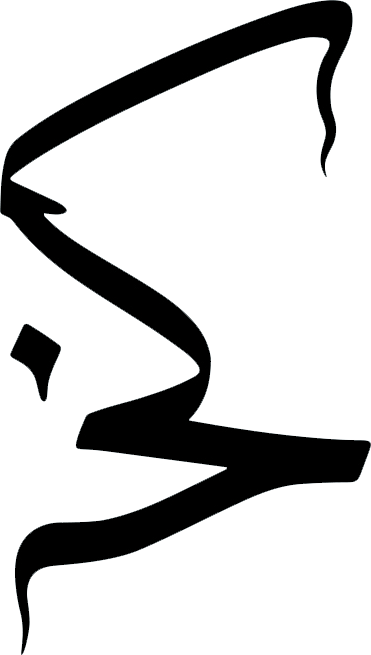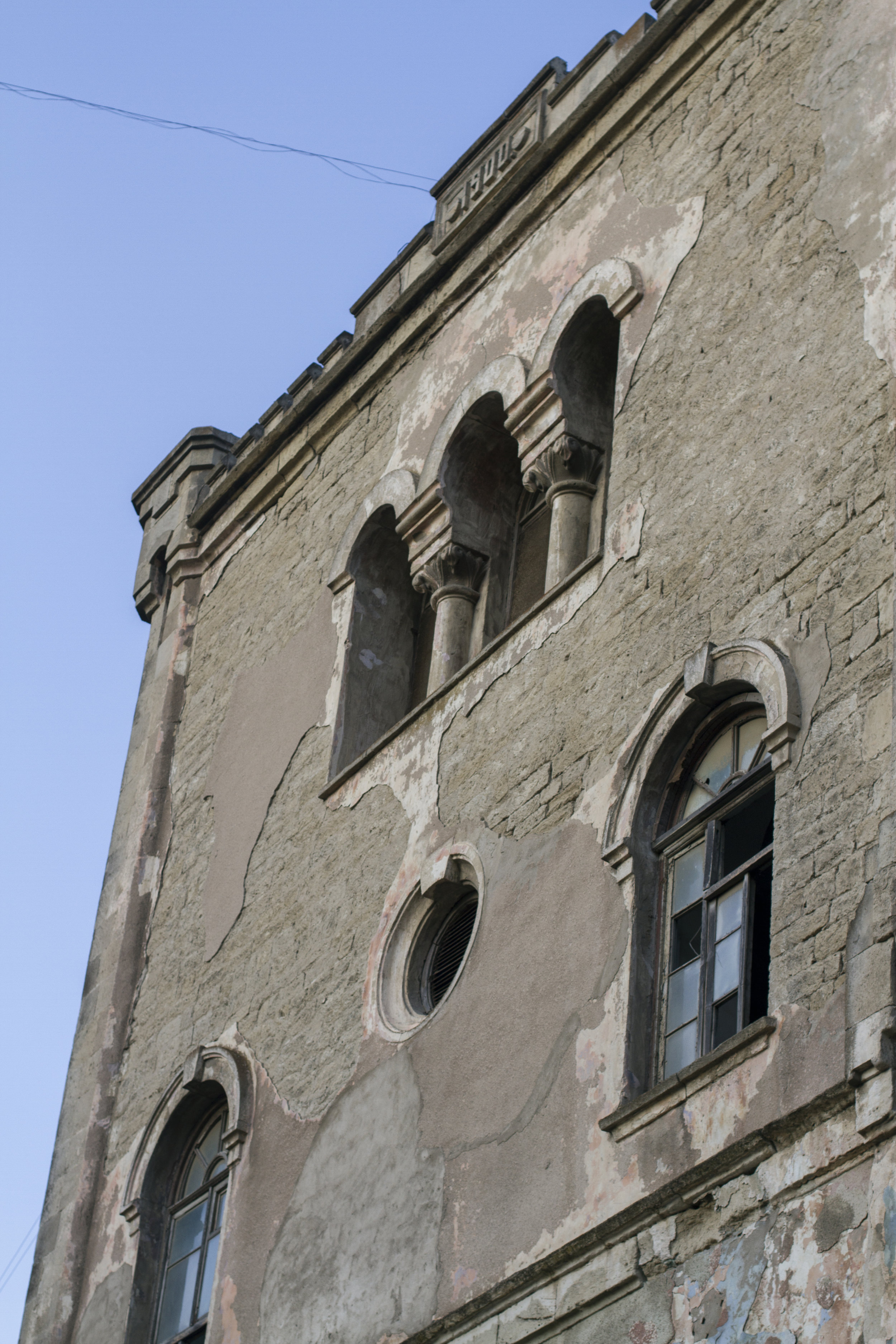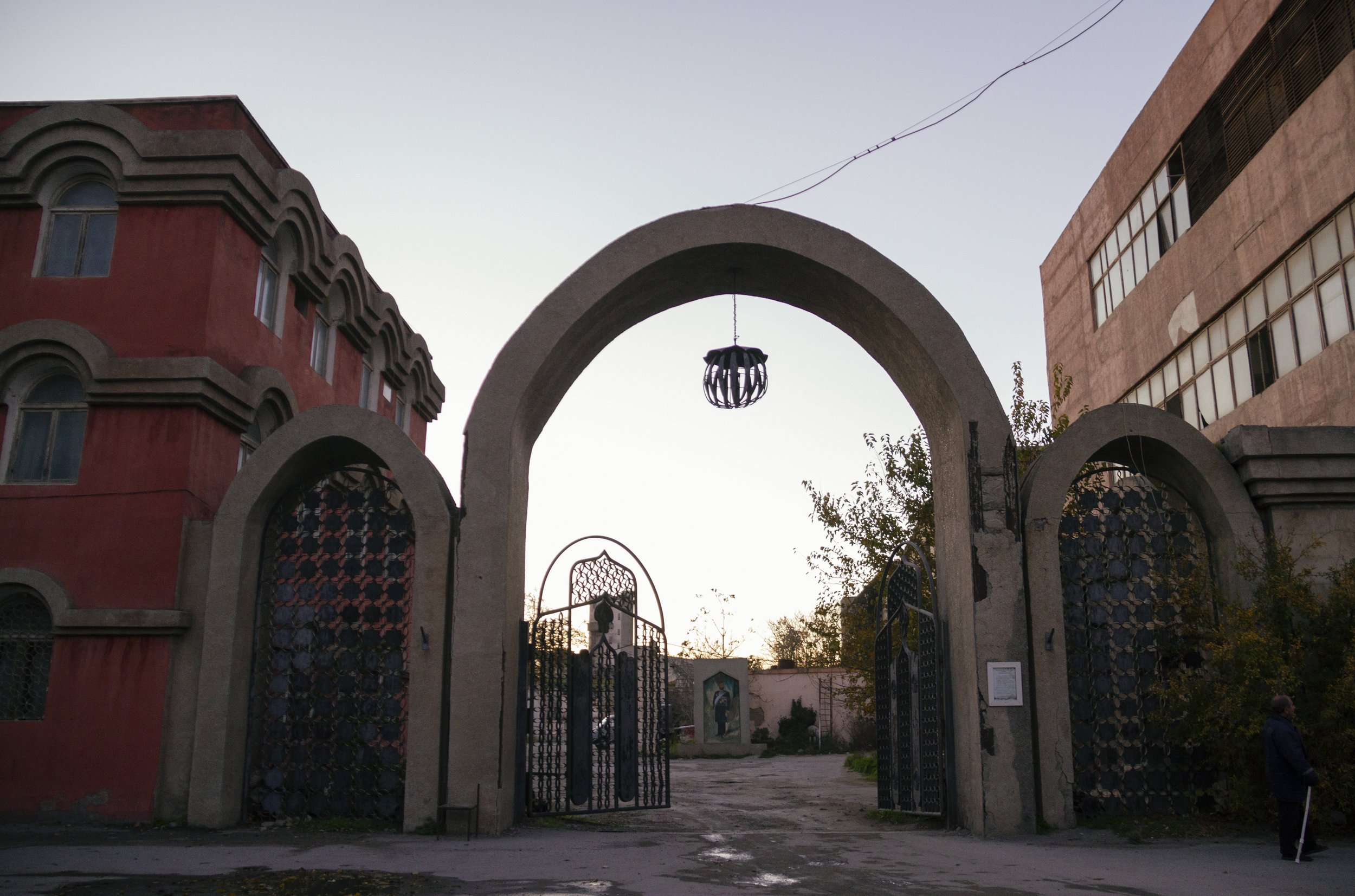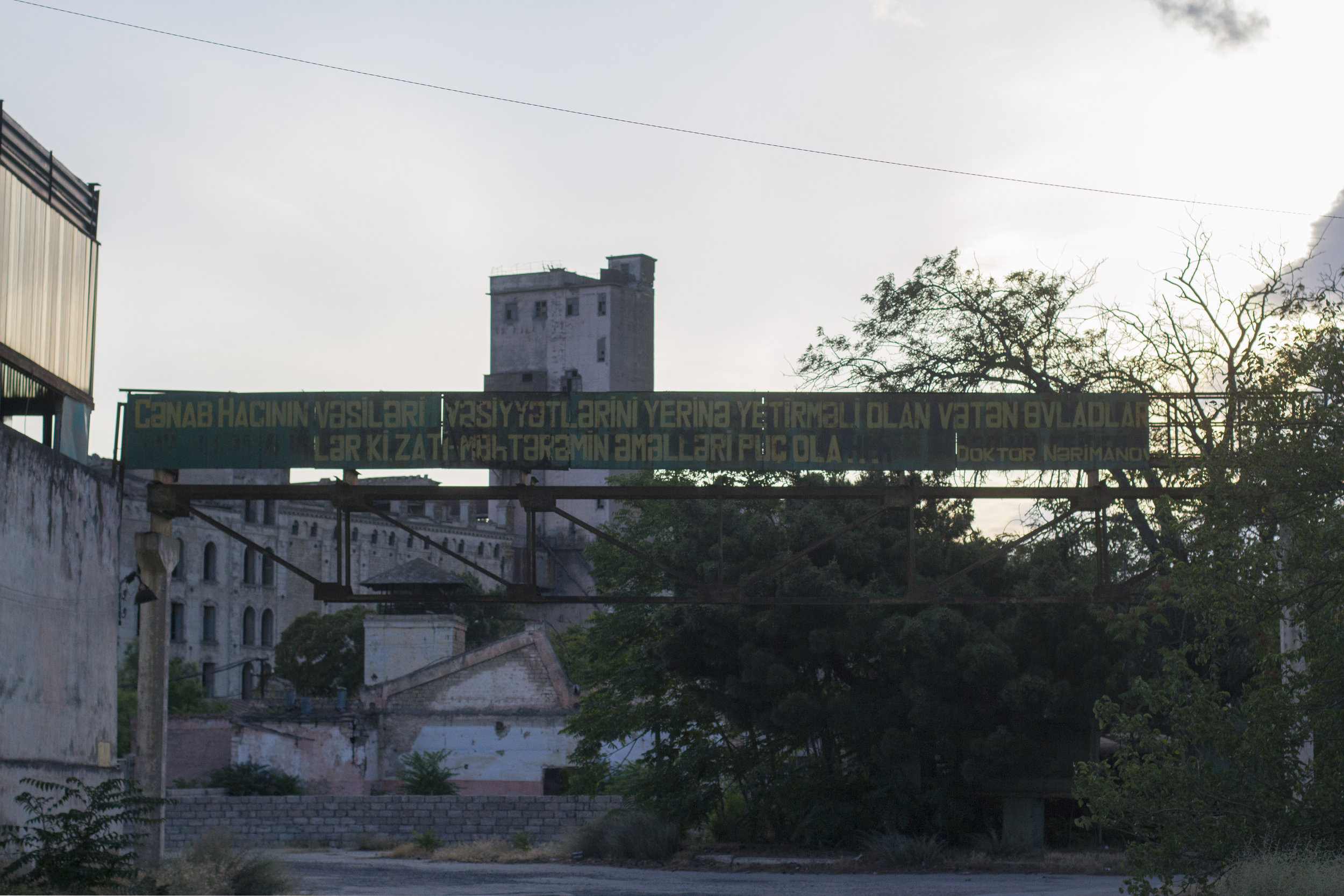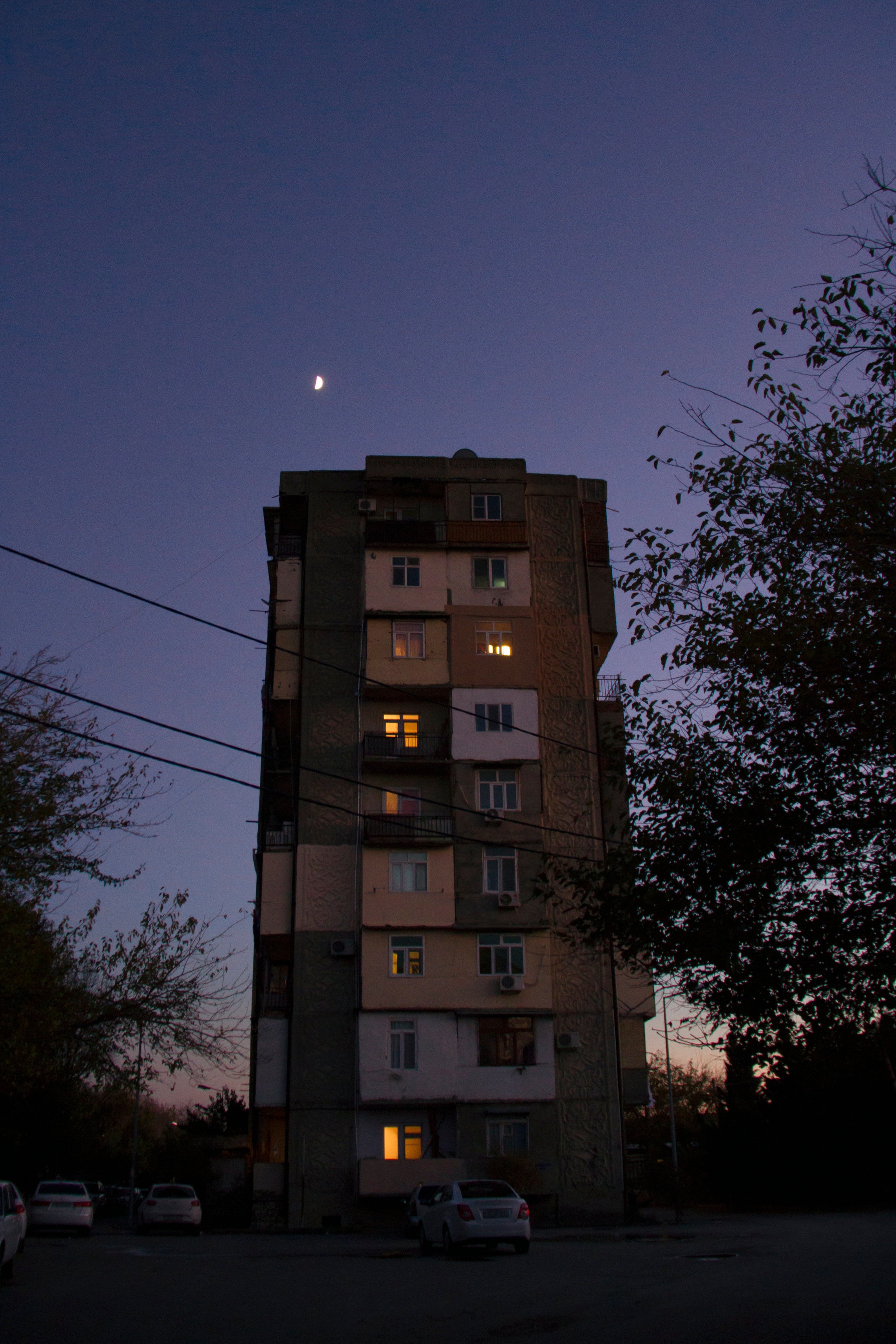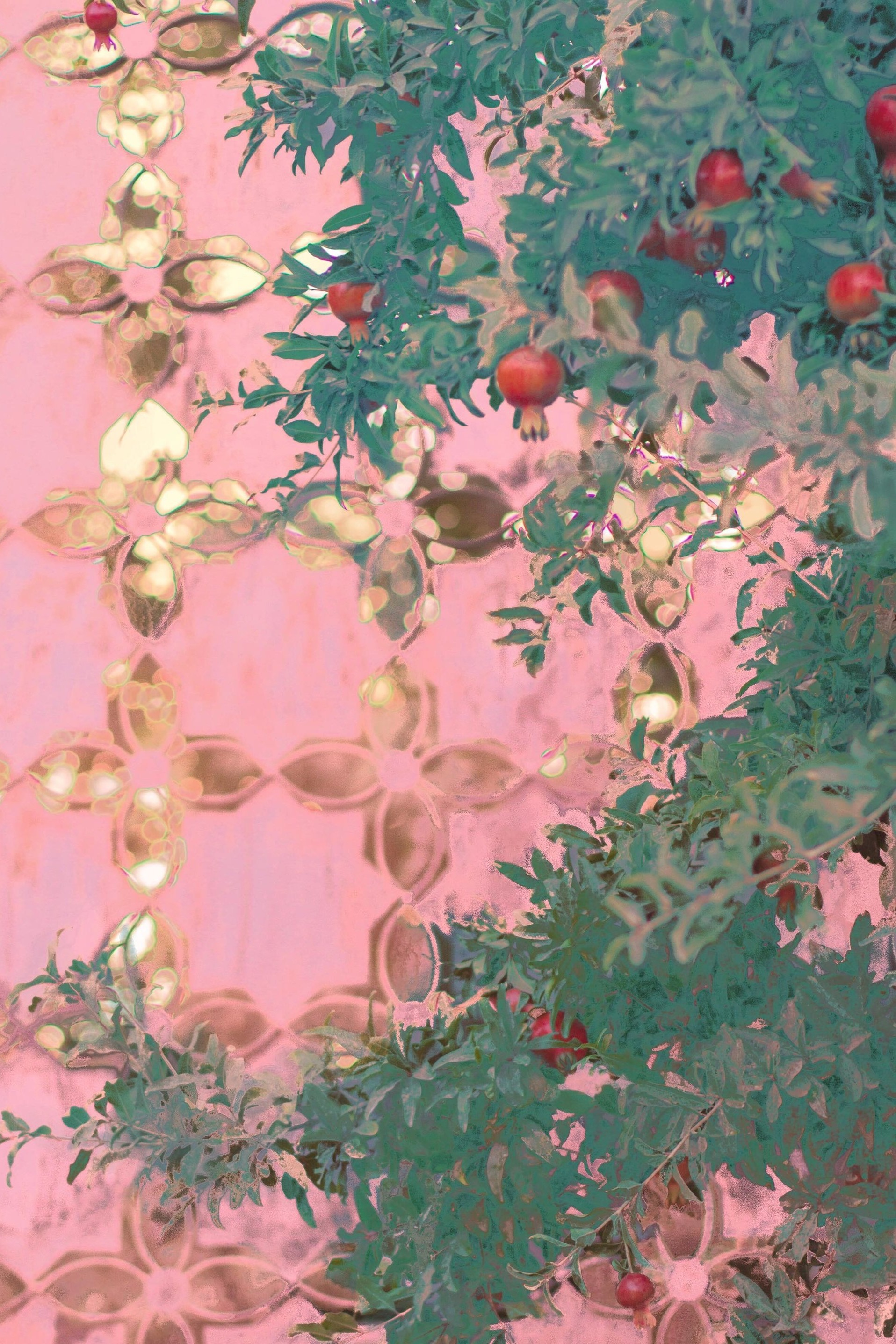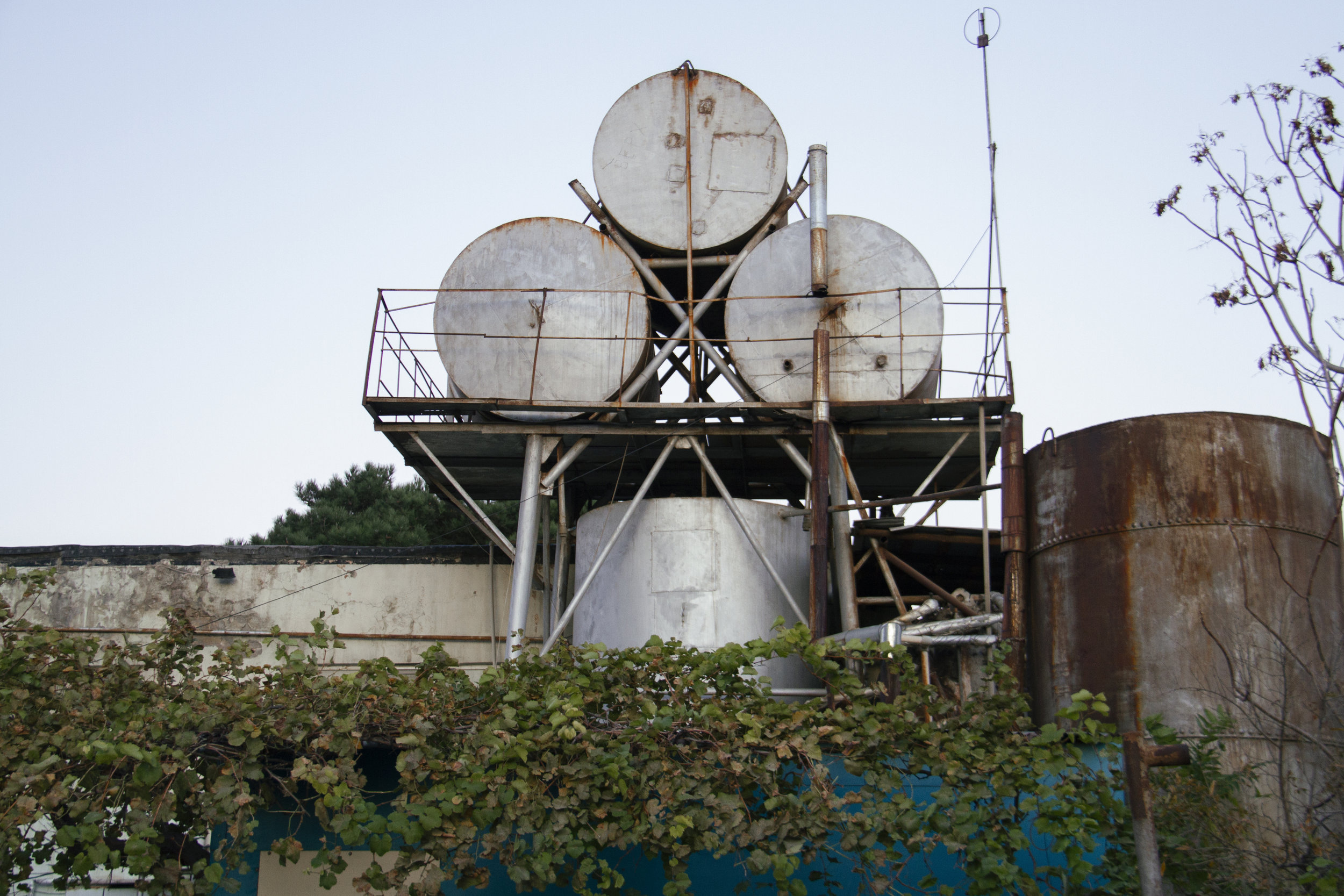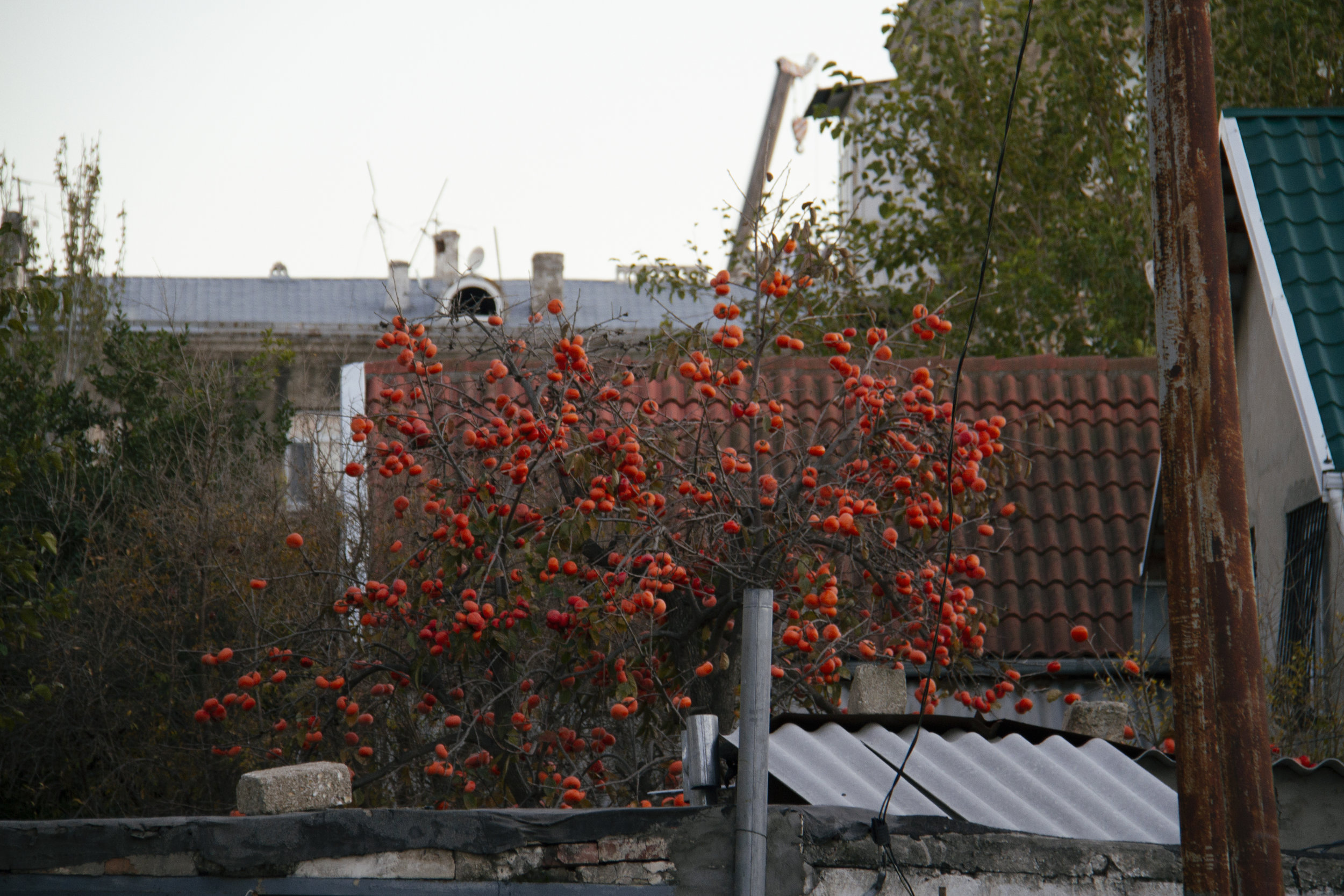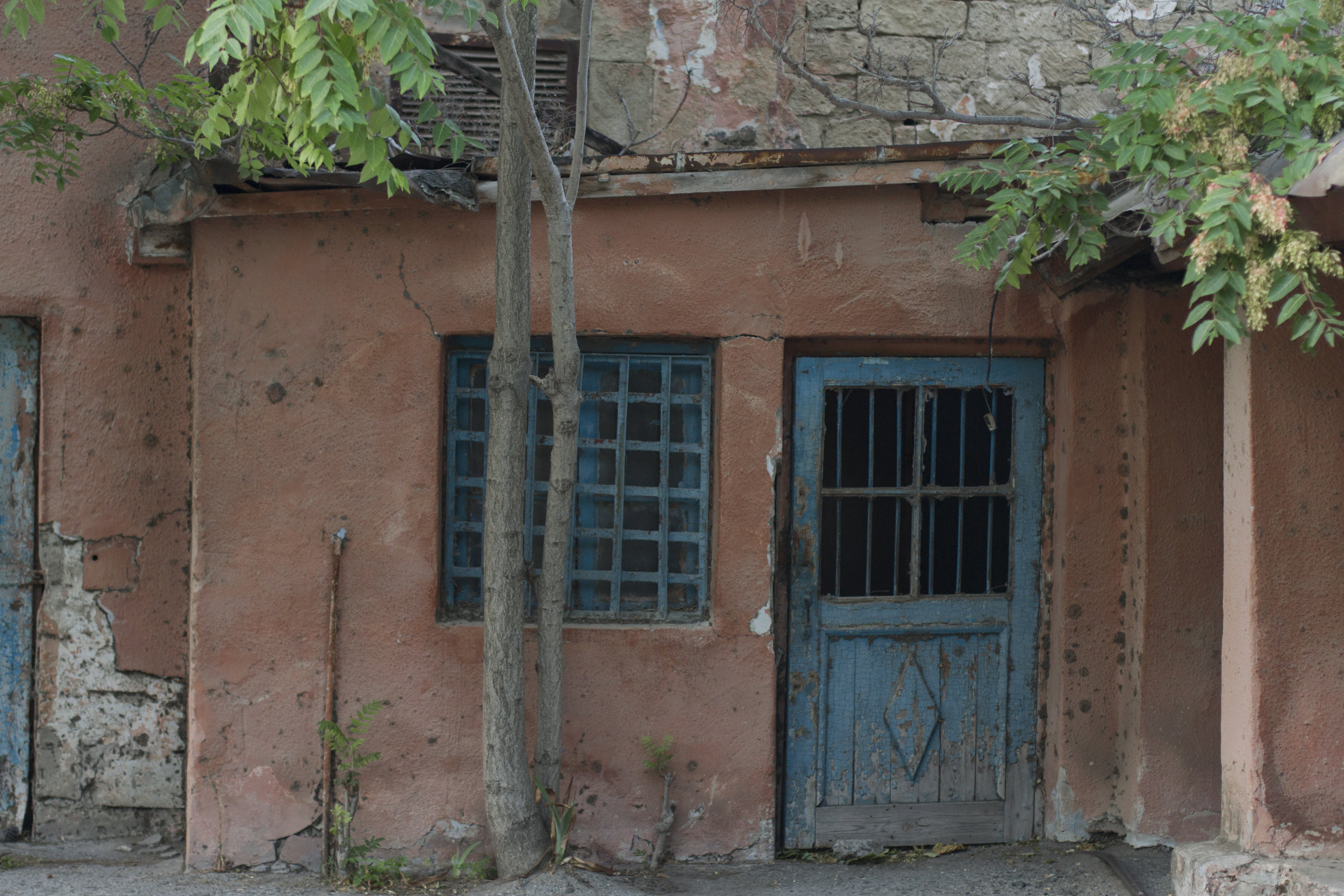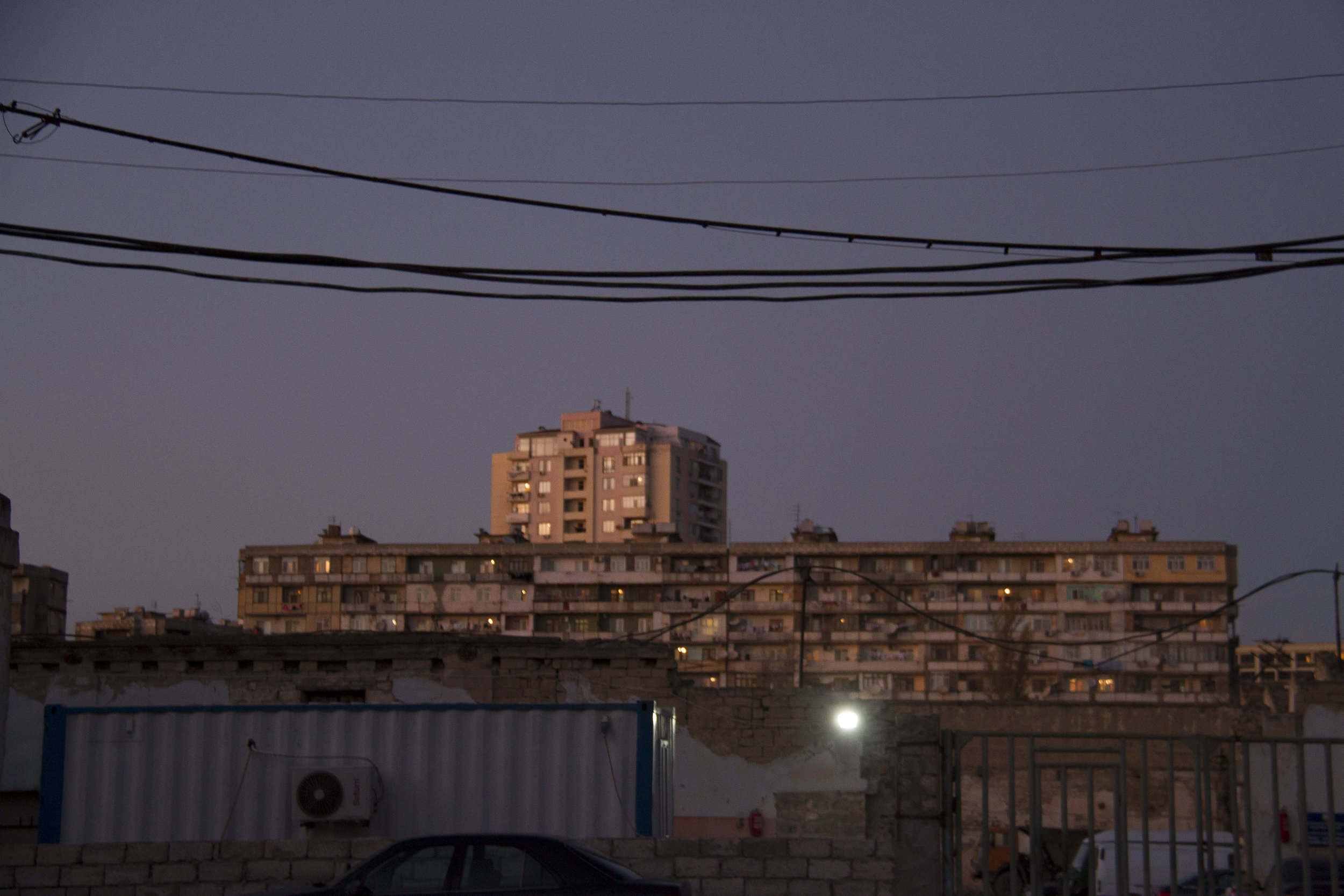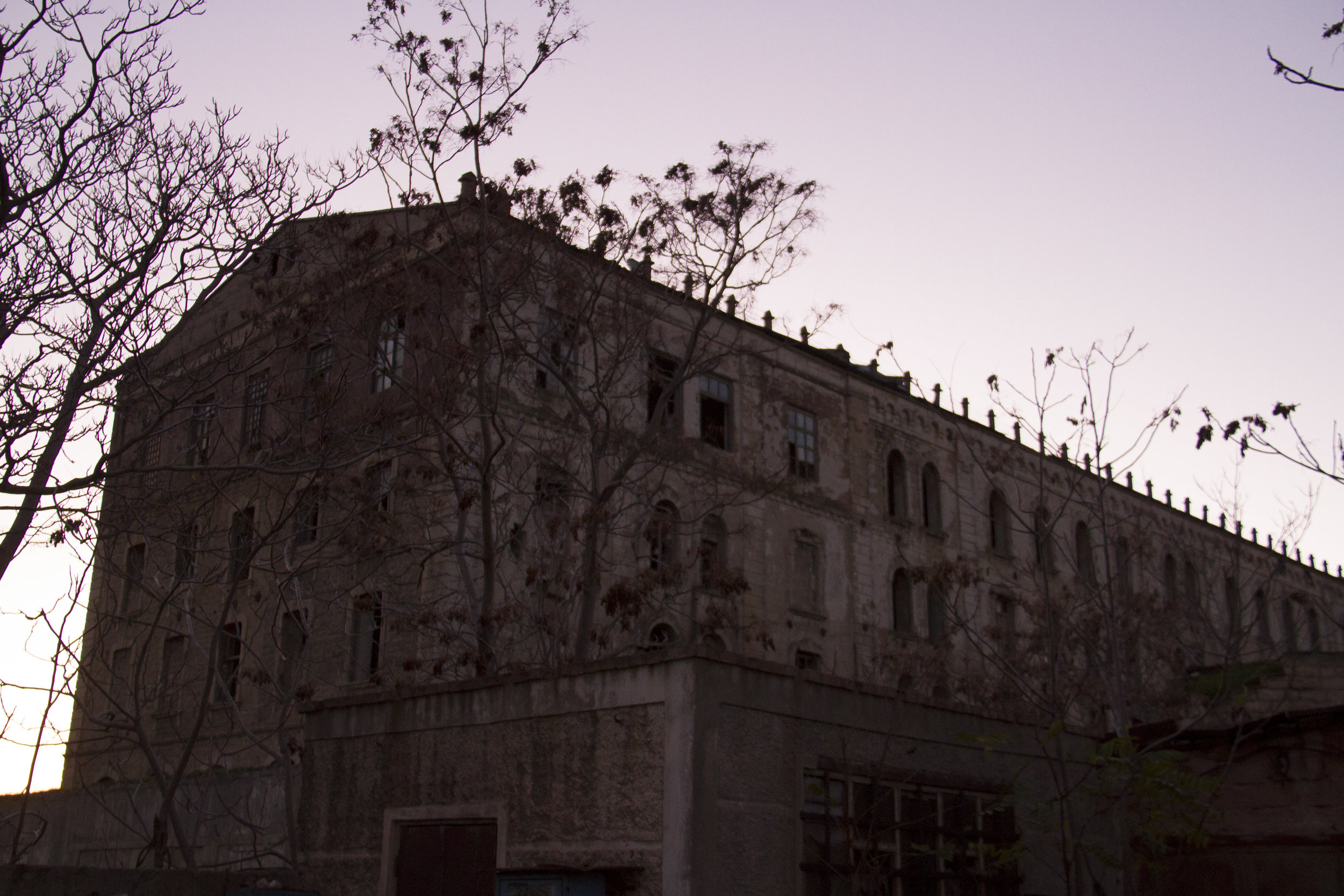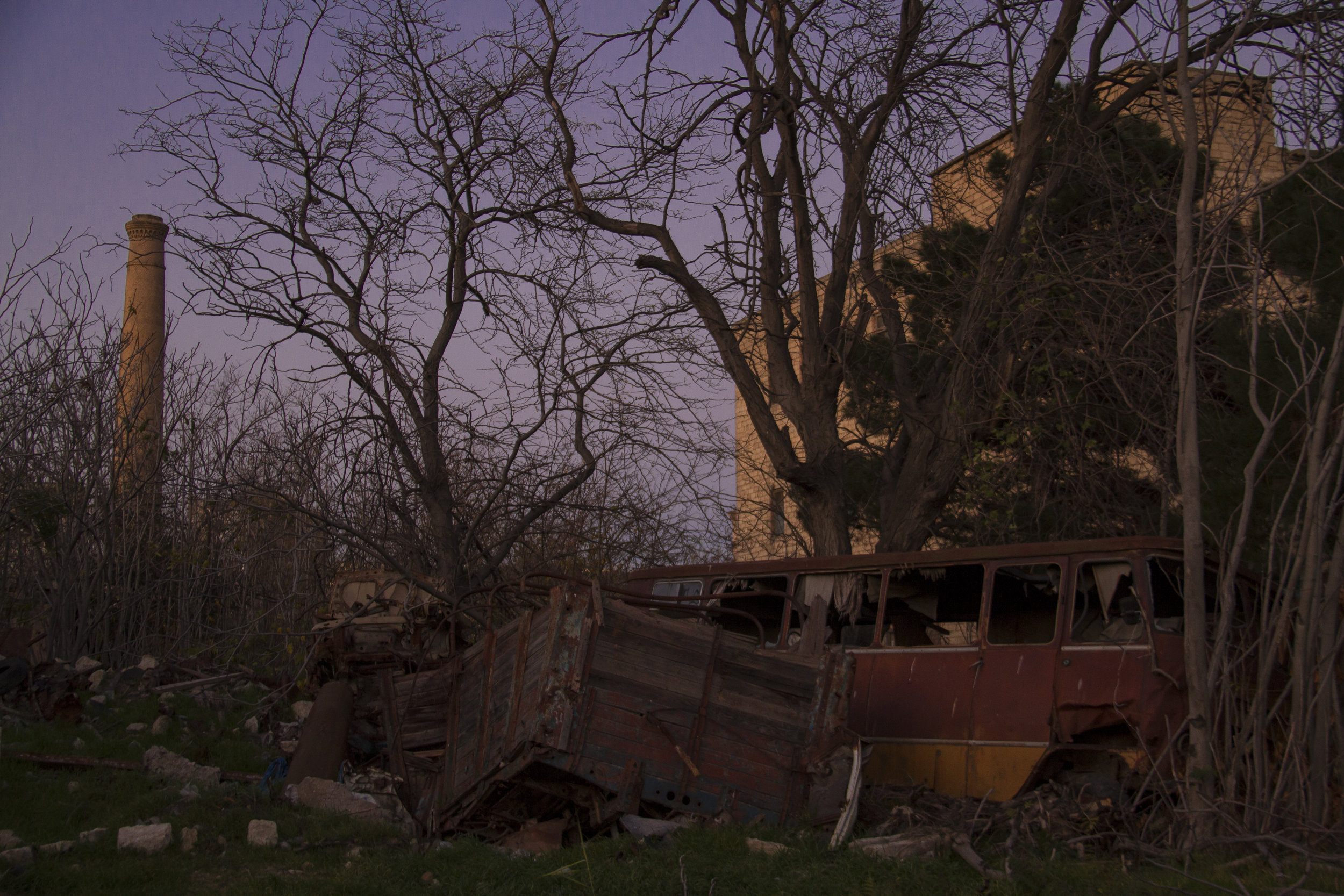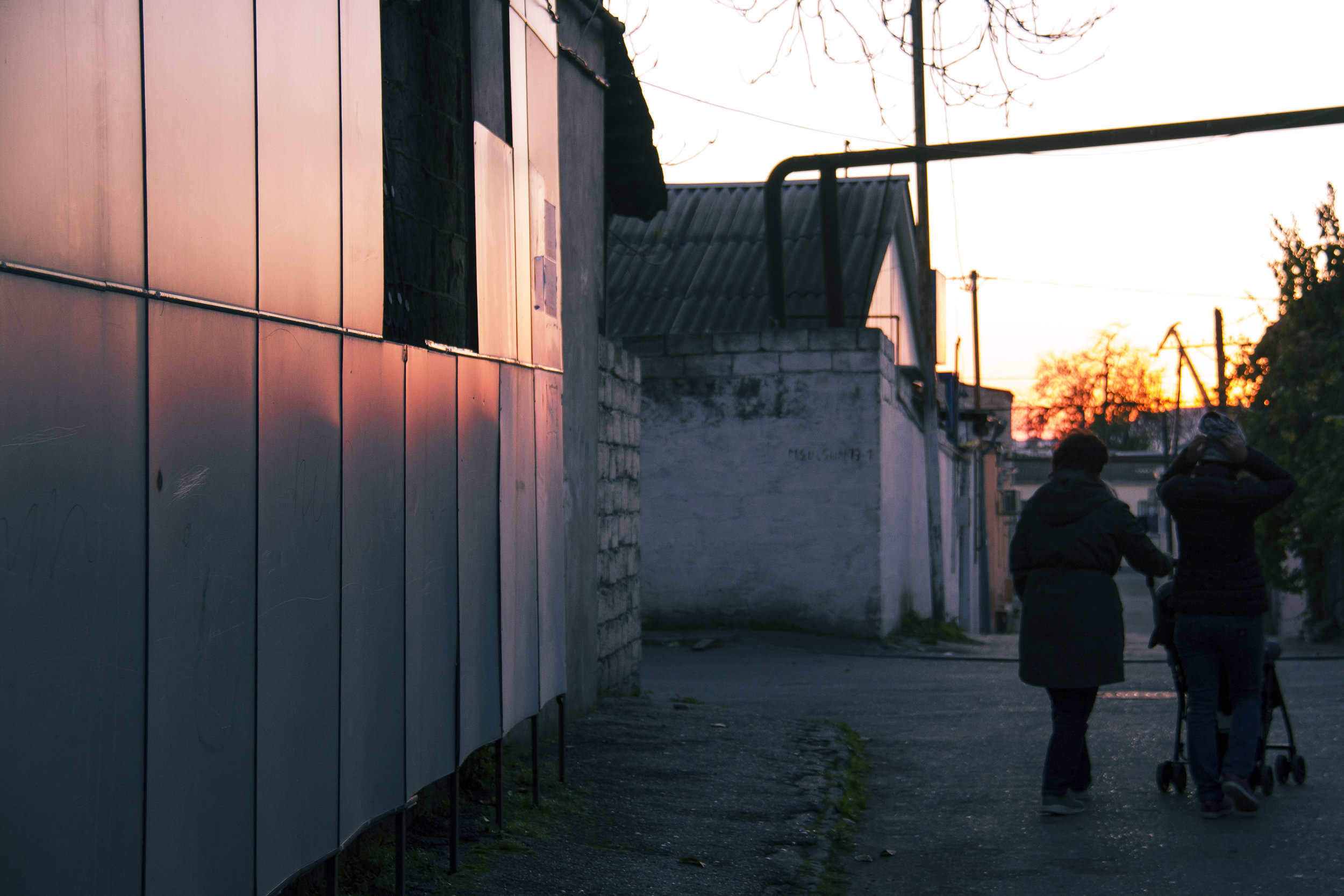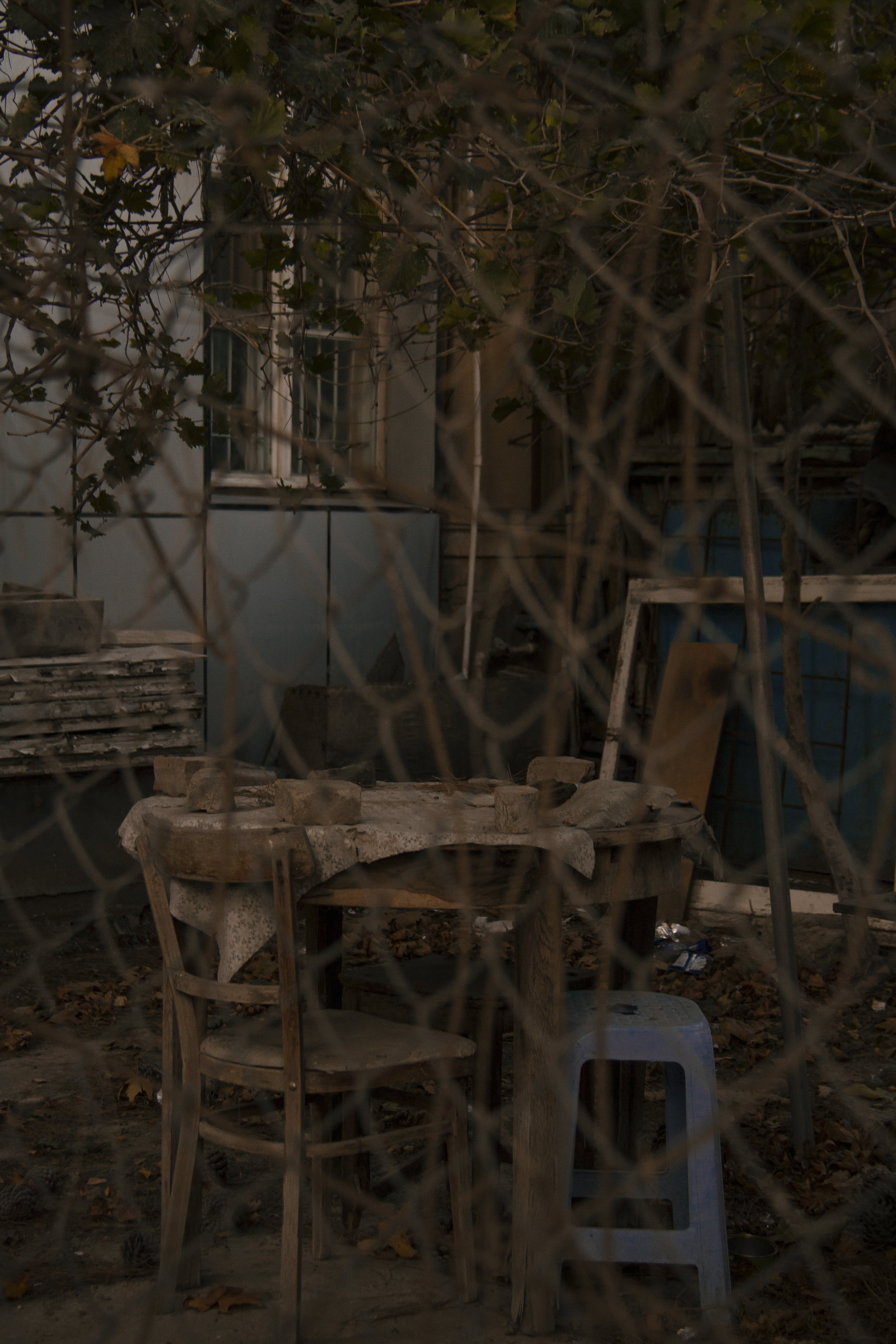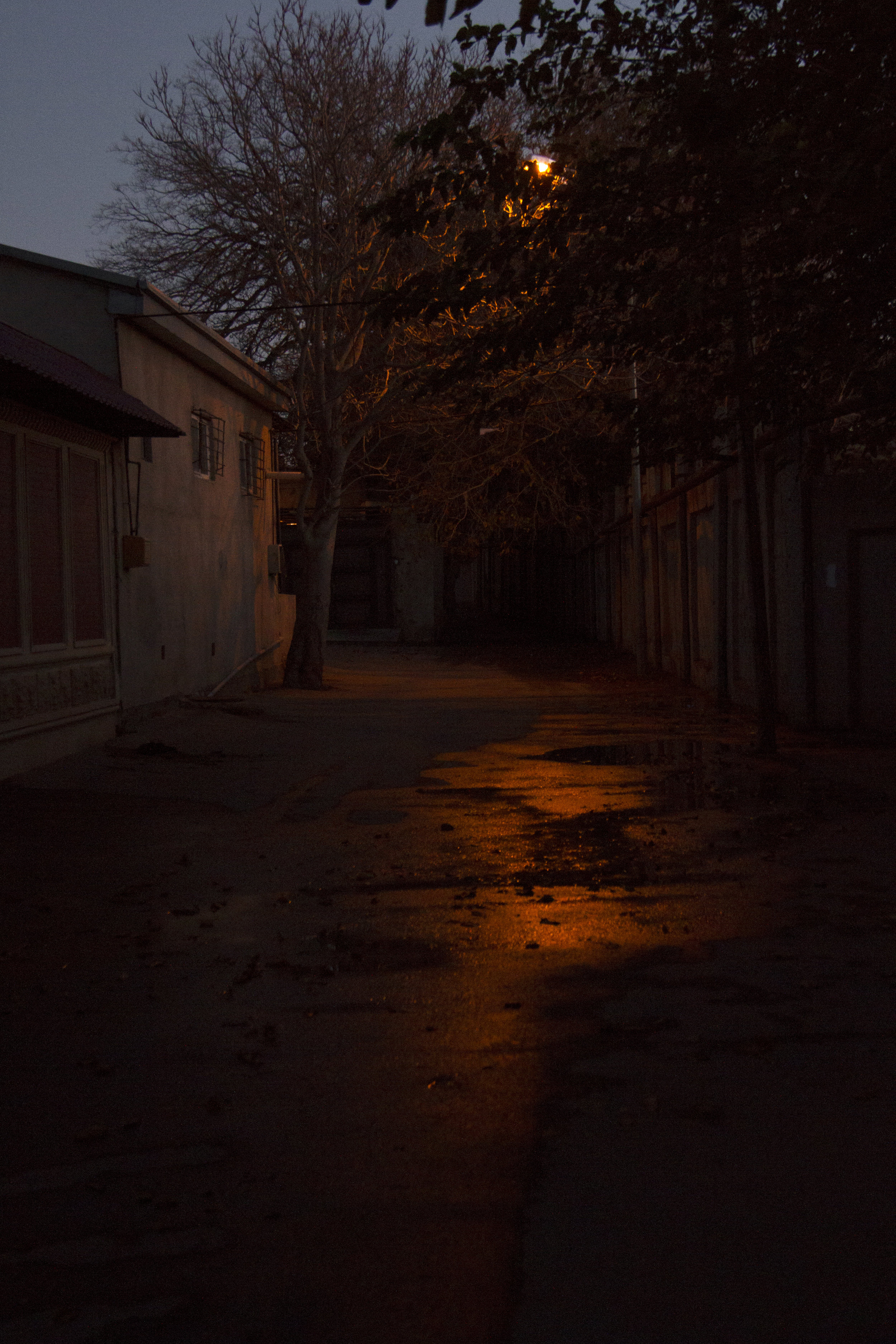Urban Decay
by Sheyda Allahverdiyeva
Images courtesy of author. Recoloring by Knar Hovakimyan.
Driving east along the Caspian shore of Baku, there is a little turn to the left that leads to an abandoned textile factory. The narrow street with bumpy asphalt ends where arches and the faded portrait of the man who built this factory mark its entrance.
Azerbaijani oil millionaire Haji Zeynalabdin Taghiyev (Hacı Zeynalabdin Tağıyev, 1823-1924) founded this factory in 1897. Taghiyev’s childhood was spent in poverty; his lost his mother at the age of 10 and had to start working as a builder from a young age to help his shoemaker father sustain the large family.
By the late 19th century, Baku had become one of the most important oil producers in the world and, therefore, a precious backyard of the Russian Empire. Wealth generated from the production of “Black Gold” was transforming the architecture and lifestyle in the city. Oil that gushed in Taghiyev’s land in Bibi-Heybat made him one of the wealthiest men of Baku when he was 35 years old. As a firm believer that petroleum money should only act as a means for developing other industries, Taghiyev played an important role in Baku’s industrial and societal transformation, investing in a number of long-term education, agriculture, and infrastructure projects.
Deprived of the opportunity to study himself, Taghiyev advocated the importance of knowledge: he sponsored the publication of newspapers and magazines, had the Qur’an translated into Azeri, and built opera and theatre buildings. Thanks to the scholarships he provided, many talented and underprivileged young people were able to study abroad who became renowned Azerbaijani figures. He opened many schools, including one for girls, for which he had to fight. The religious authority at the time denounced him and this initiative as blasphemous, going so far as threatening his life. But Taghiyev succeeded in founding the school, citing his faith in the bright future of a country where mothers are educated and intellectual.
The establishment of the cotton factory is one Taghiyev’s most notable projects. Prior to even laying its foundations, Taghiyev had bought large plots of land outside Baku and employed local farmers to plant cotton. The factory made a name for the excellent quality of its calico fabric, used by Muslims during pilgrimage to holy places. Despite competition from the Russian textile giants, it became the main supplier of this fabric—one of the best-equipped and successful ones in the Empire. The factory functioned until the early 2000s, employing around 8,000 people.
The textile factory at the far east end of Baku impacted the emergence of a whole new residential area, initially laid for its workers. Here, they could live as a community, attend evening classes and send their kids to school. As a result of population transfer by Soviet authorities, the area became one of the most diverse parts of Baku. It was a place of harmonic coexistence “of Azerbaijani with the Jewish, Armenian, Russian, and Tatar colleagues,” as one of the residents I spoke to recalled.
The economic chaos after the fall of the Soviet Union caused fabric production to plummet, and since then, “Kombinat,” as people call this place, has been abandoned. What used to be one of the largest factories of the Russian Empire now consists of half-ruined working halls, a mill, and a “storage area for furniture and other stuff,” according to its watchman. Groups of stray dogs have inhabited the ruins, and bushes and trees have overtaken the pathways. Some parts of it have been transformed into car repair shops or storehouse units; the rest depreciates with every rainfall.
Azerbaijan has faced a new oil boom and enjoyed an economic rise since late 1990s. Much like the first oil boom, construction of luxury high-rises has radically changed the face of the city. However, these processes have not touched the old manufacturing sites, despite the aspirations of the government to revive non-oil industries. Taghiyev’s cotton factory, as well as the numerous other industrial plants, has been left to deteriorate. According to the watchman, there is no point in restoring it because the technology is obsolete. No one seems to know anything about the destiny of “Kombinat.”
The surrounding residential buildings bear the personal touches of their current residents: they have added balconies, water tanks and other extensions, stretched grapevines on the walls; the sidewalks have been fenced to make little gardens for ground-floor residents, and the facades have been transformed into “chat spaces” for school children. But the residents of “Kombinat” refrain from making fundamental changes to their living spaces, as they fear that the city officials might decide to extend the seaside boulevard further east or build high-rises. Following the trend in central parts of the city, “beautification” projects are increasingly affecting the peripheries, although it is questionable whether these short-term actions will beget long-term investments in a diversified economy.
On entering the yard of the factory, there is a quote by Nariman Narimanov (1870-1925), an Azerbaijani Bolshevik revolutionary, writer, publicist, and politician whose education Taghiyev sponsored. His words are a powerful promise: “The heirs and those who are obliged to fulfill the will of Janab (Mister) Haji [Taghiyev] will never allow the deeds of his majesty to be lost” (translated from old Azeri language). Even if the factory’s ruins are razed to the ground, Baku’s legacy of a robust manufacturing industry, driven by an educated working class community, cannot be erased.
Sheyda Allahverdiyeva began her career as a photojournalist in 2014. She is the author of a number of articles and photo essays dealing with gender issues, vanishing landscapes and professions published in several local and regional media outlets, such as Chai-khana.org, Fors magazine, Post Pravda magazine and others. Sheyda is a currently a freelance photojournalist based in Baku, Azerbaijan.
